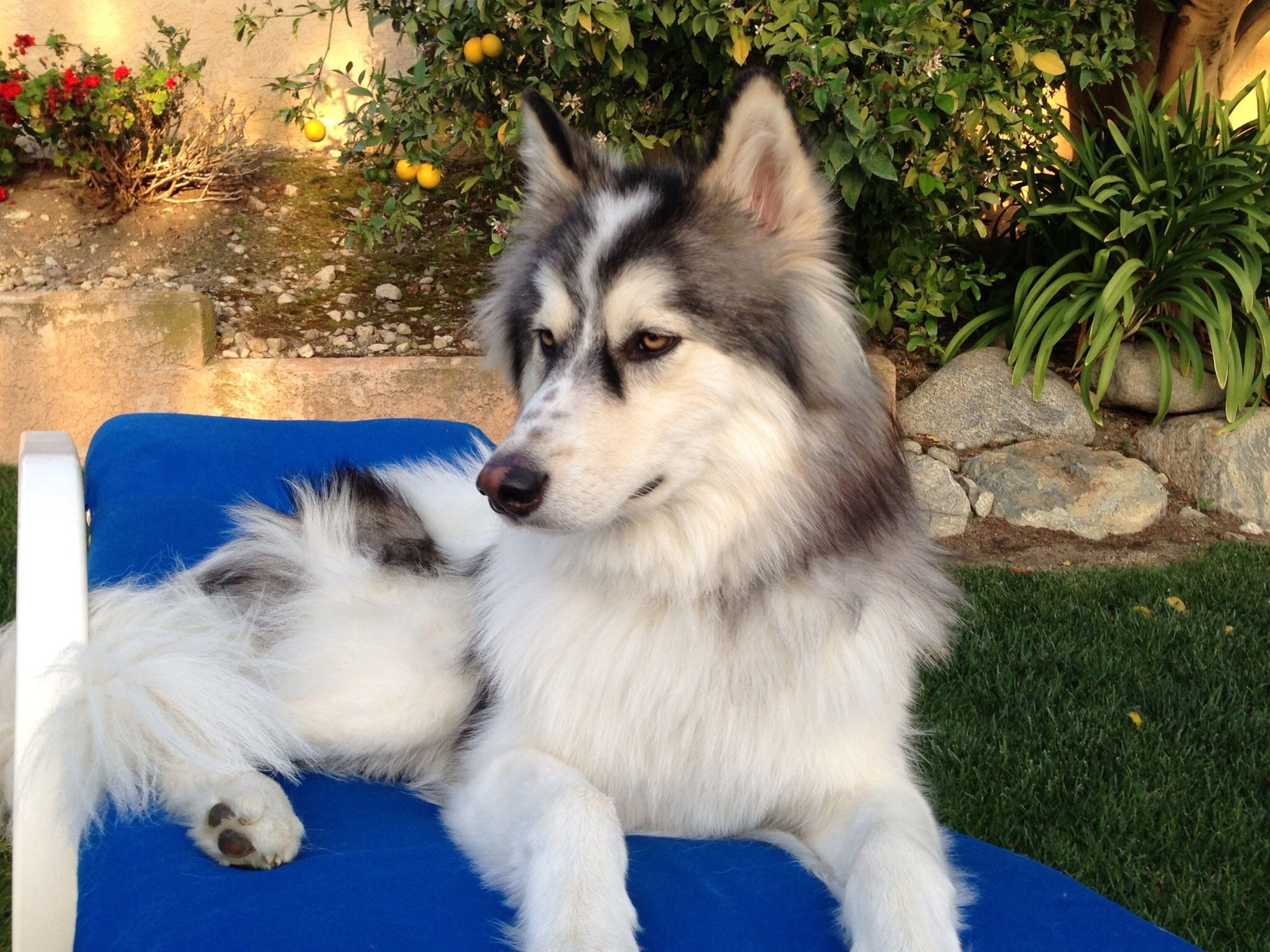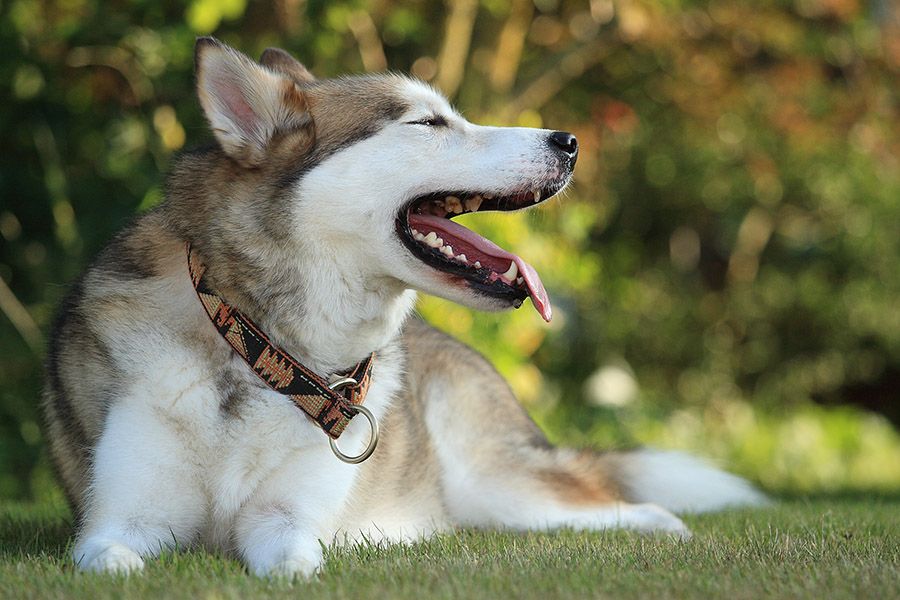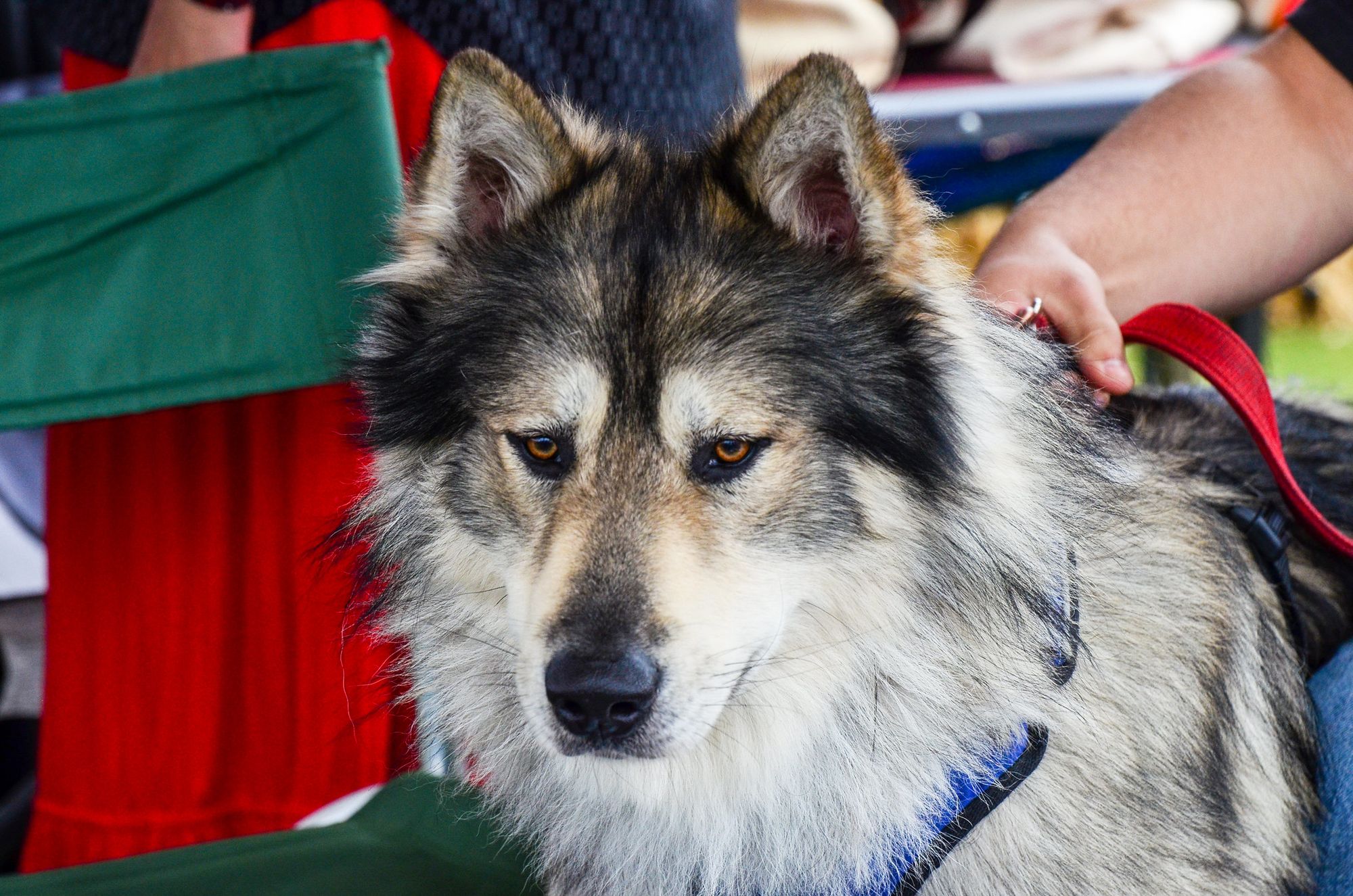The American Indian Dog is a remarkable breed that not only captures the hearts of dog lovers but also carries a significant cultural legacy. This article delves into the historical background, physical characteristics, temperament, training, health, and care of the American Indian Dog. We will also explore its portrayal in popular culture and highlight the importance of preserving this exceptional breed.

Historical Background
The American Indian Dog has a fascinating history deeply intertwined with Native American tribes. These dogs played a vital role in the lives of indigenous peoples, serving as companions, hunters, and guardians. For centuries, they were valued for their versatility, loyalty, and adaptability. However, due to various factors, the breed faced a decline in population over time.
Physical Characteristics of the American Indian Dog
The American Indian Dog is a visually striking breed with unique physical attributes. Here are some key characteristics of their appearance:
1. Size: American Indian Dogs are medium to large-sized dogs, with males typically being larger than females. They stand between 20 to 28 inches (50 to 71 cm) at the shoulder, and their weight ranges from 40 to 100 pounds (18 to 45 kg), depending on their size and build.
2. Coat: These dogs have a dense double coat that provides insulation and protection from various weather conditions. The coat can be short or long, and the texture may vary from smooth to slightly coarse. American Indian Dogs come in a variety of coat colors, including black, brown, white, gray, and various combinations of these colors.
3. Appearance: The American Indian Dog has a well-muscled body and a strong, athletic build. They have a deep chest, straight back, and a slightly sloping croup. Their legs are straight and sturdy, allowing them to move with agility and grace. The tail is bushy and may be carried low or in a gentle curve over the back.
4. Head and Face: These dogs have noble and expressive face. They have a moderately broad skull with a defined stop. The muzzle is well-proportioned and tapers to a black or brown nose, depending on the dog's coat color. Their eyes are almond-shaped and can be various shades of brown or amber. The ears are erect and slightly rounded at the tips.
Personality and Temperament of the American Indian Dog
The American Indian Dog is known for its intelligent, loyal, and gentle nature. Here are some traits that define their personality and temperament:
1. Intelligence: These dogs are highly intelligent and quick to learn. They have a strong desire to please their owners and excel in activities that stimulate their minds. Their intelligence makes them versatile and trainable for various tasks and sports.
2. Loyalty: American Indian Dogs are fiercely loyal and devoted to their families. They form strong bonds with their human companions and are known to be protective of their loved ones. Their loyalty and watchful nature make them excellent guard dogs.
3. Gentle and Friendly: Despite their protective instincts, American Indian Dogs are generally gentle and friendly. They are known to be good with children and can be affectionate and patient with them. Proper socialization from an early age is typical to ensure their friendly nature extends to other animals and strangers.
4. Alertness: These dogs possess a keen sense of awareness and make excellent watchdogs. They are attentive and quick to alert their owners to any potential dangers or unusual activities in their surroundings.
5. Adaptability: American Indian Dogs are adaptable to various living environments, including apartments and houses. However, they thrive best in homes with access to a secure, fenced yard where they can expend their energy and explore.
6. Energy Level: These dogs have a moderate to high energy level and require regular exercise to keep them physically and mentally stimulated. Daily walks, playtime, and engaging activities such as agility or obedience training are recommended to fulfill their exercise needs.
In conclusion, the American Indian Dog possesses striking physical characteristics that reflect their unique heritage. Coupled with their intelligent, loyal, and gentle temperament, they make wonderful companions for individuals and families who appreciate their rich cultural background and desire a devoted and versatile canine companion.
Training and Socialization of the American Indian Dog
Training and socialization are crucial aspects of raising an American Indian Dog. Here are some key points to consider:

1. Start Early: Begin training and socializing your American Indian Dog from a young age. Early socialization helps them become well-adjusted and confident in various situations. Introduce them to different environments, people, animals, and experiences in a positive and controlled manner.
2. Positive Reinforcement: American Indian Dogs respond best to positive reinforcement training methods. Use rewards such as treats, praise, and play to motivate and encourage desired behaviors. Avoid harsh or punitive training techniques as they can be detrimental to their sensitive nature.
3. Basic Commands: Teach your American Indian Dog basic obedience commands like "sit," "stay," "come," and "heel." These commands establish communication and control, making them easier to manage in different situations. Be consistent, patient, and use positive reinforcement to reinforce good behavior.
4. Mental Stimulation: American Indian Dogs are intelligent and thrive on mental challenges. Engage them in interactive games, puzzle toys, and training activities that stimulate their minds. This helps prevent boredom and destructive behaviors.
5. Leash Training: Proper leash training is essential to ensure your American Indian Dog walks calmly on a leash without pulling. Gradually introduce them to wearing a collar or harness and teach them to walk beside you. Use positive reinforcement and reward them for good leash manners.

6. Socializing with Other Dogs: Expose your American Indian Dog to other dogs in controlled and supervised environments. Organize playdates, visits to dog parks, or join training classes to provide opportunities for positive interactions and socialization with other canines.
7. Consistency and Patience: Consistency is key in training an American Indian Dog. Establish clear rules and boundaries, and reinforce them consistently. Remain patient and understanding, as each happy dog learns at their own pace.
Health and Care
Taking proper care of your American Indian Dog is essential for their overall well-being. Here are some guidelines:
1. Veterinary Care: Schedule regular check-ups with a veterinarian to monitor your dog's health. Vaccinations, deworming, and preventive treatments for fleas, ticks, and heartworms are necessary. Regular dental care and grooming should also be part of their healthcare routine.
2. Balanced Diet: Provide a nutritious and well-balanced diet that suits your dog's age, size, and activity level. High-quality dog food with appropriate protein, carbohydrates, and fats is essential for their growth and energy needs. Consult with your veterinarian for specific dietary recommendations.
3. Exercise: American Indian Dogs are active and require regular exercise to stay healthy and prevent obesity. Provide daily opportunities for physical exercises, such as walks, runs, playtime, and mentally stimulating activities. This helps keep them physically fit and mentally engaged.
4. Grooming: The grooming needs of American Indian Dogs vary depending on their coat type. Regular brushing helps remove loose hair, prevents matting, and keeps their coat healthy. Check their ears regularly for cleanliness and trim their nails as needed.
5. Hygiene and Cleanliness: Maintain good hygiene by keeping their living environment clean, providing fresh water daily, and ensuring they have access to shade and shelter. Regularly clean their bedding, toys, and food bowls to prevent the buildup of bacteria.
6. Watch for Warning Signs: Pay attention to any changes in behavior, appetite, or physical appearance. Watch for signs of discomfort, pain, or illness, and consult a veterinarian if you notice anything unusual.
By providing proper training, socialization, and care, you can ensure that your American Indian Dog leads a happy, healthy, and well-balanced life.
American Indian Dog in Popular Culture
The American Indian Dog has captured the imagination of artists, writers, and filmmakers, leaving a mark on popular culture. Here are some ways in which this unique breed has been portrayed:

1. Literature: American Indian Dogs have been featured in various novels and books that explore Native American culture and folklore. They often symbolize loyalty, spirituality, and the deep connection between humans and animals.
2. Art and Paintings: The mystique and beauty of American Indian Dogs have inspired artists to depict them in paintings, sculptures, and other art forms. Their striking physical features and cultural significance make them captivating subjects for artistic interpretations.
3. Films and Television: American Indian Dogs have made appearances in movies and TV shows, further popularizing their image. They are often portrayed as noble and intelligent companions, reflecting the breed's unique qualities.
4. Indigenous Traditions: American Indian Dogs hold a special place in the traditions and stories of various indigenous cultures. They are revered as sacred animals and are believed to possess spiritual qualities and a deep connection to nature.
5. Symbolism and Tributes: The American Indian Dog represents resilience, loyalty, and the enduring bond between humans and animals. Their symbolic significance has been incorporated into logos, emblems, and mascots of organizations and sports teams.
In conclusion, the American Indian Dog's presence in popular culture highlights its significance and allure. Preserving this exceptional breed is not only about safeguarding a unique and beautiful dog but also about preserving a rich cultural heritage and genetic diversity.
The Importance of Preserving the Breed
Preserving the American Indian Dog is of utmost importance for several reasons:
1. Cultural Heritage: The American Indian Dog is deeply rooted in Native American culture and traditions. By preserving the breed, we honor the historical and cultural significance it holds for indigenous communities. It serves as a link to their heritage and a reminder of their profound relationship with dogs.
2. Genetic Diversity: The American Indian Dog exhibits genetic diversity due to its ancestral origins and careful breeding practices. Preserving the breed ensures that this diversity is maintained, which is essential for the long-term health and vitality of the breed.
3. Working Abilities: American Indian Dogs have historically served as valuable working companions for indigenous peoples. Preserving the breed ensures that their working abilities, such as hunting, herding, and guarding, are preserved for future generations.

4. Companion Dogs: American Indian Dogs make wonderful companions for individuals and families. Their loyal, intelligent, and gentle nature makes them excellent family pets. Preserving the breed ensures that these unique qualities are available to those who appreciate their exceptional characteristics.
5. Conservation Efforts: By supporting the preservation of the American Indian Dog, we contribute to broader conservation efforts for indigenous and rare dog breeds. It fosters awareness about the importance of maintaining genetic diversity and protecting the cultural heritage associated with these breeds.
By recognizing the importance of the American Indian Dog, we can contribute to its the continued existence and ensure that future generations can appreciate its remarkable qualities.
Conclusion
The American Indian Dog is a captivating breed that carries a deep cultural significance. Their historical legacy, physical attributes, and amiable temperament make them treasured companions for those seeking a unique and loyal canine companion. Through responsible breeding, proper care, and continued appreciation, we can ensure the preservation of this extraordinary breed for generations to come.
FAQs
1. Are American Indian Dogs suitable for families with children?
· Yes, American Indian Dogs are known for their gentle and friendly nature, making them excellent companions for families with children. However, proper supervision and socialization are necessary to ensure positive interactions.
2. Do American Indian Dogs require a lot of exercise?
· Yes, American Indian Dogs are an active breed that requires regular exercise to keep them physically and mentally stimulated. Daily walks, playtime, and engaging activities are recommended.
3. Are American Indian Dogs prone to any specific health issues?
· With responsible breeding practices and genetic diversity, American Indian Dogs have a relatively low incidence of hereditary diseases. However, like any other breed, routine veterinary care is essential to monitor their overall health.
4. Can American Indian Dogs adapt to different living environments?
· Yes, American Indian Dogs are adaptable and can adjust well to different living environments. Whether in rural or urban settings, they can thrive as long as their exercise and socialization needs are met.
5. Where can I find reputable American Indian Dog breeders?
· Reputable American Indian Dog breeders can be found through recognized breed associations, online directories, or by contacting local dog clubs that specialize in rare or indigenous breeds.

